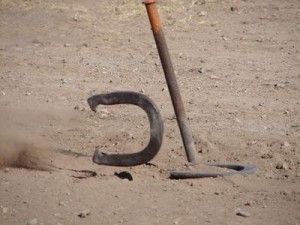Perceiving, working with, and managing risk around the Internet of Things (IoT) requires a new way of thinking. The vast and growing numbers of sensing-networked-computing devices, the great variability of types of those devices, the ambient-almost-invisible nature of many of the devices, and the emergent and unpredictable behavior from networked effects puts us into a whole new world. I don’t believe that, at present, we have the mindset or tools to even broadly perceive this cultural and technological change, much less manage risk around it. In many ways, we don’t know where to start. The good news, though, is that there is historical precedent with changing how we perceive the world around us.
Physics rock stars of the 2nd millennium
While a lesser known name, one of the top 3 rock star physicists of the past half millennium or so is James Clerk Maxwell, sharing the stage with Isaac Newton and Albert Einstein. While known primarily for his contributions to electromagnetic theory, he made contributions in several other areas as well to include governors, color photography, the kinetic theory of gases. It was this latter work on the distribution of particle velocities in a gas that helped evolve the notion of entropy and led to bold new ways of perceiving the world around us. And he did all of this in his short 48 years of life.
In his book, Maxwell’s Demon: Why Warmth Disperses and Time Passes, author and physics professor Van Baeyer describes Maxwell as particularly adept at marrying theory with what was observable in the lab or elsewhere in the natural world. As Maxwell worked to come to terms with the work that Joule, Rumford, and Clausius had done toward the development of the 2nd law of thermodynamics, he realized that he was entering a world that he could no longer directly observe. This was a world of unseeable atoms and molecules that could not be counted and whose individual behavior could not be known. As Von Baeyer describes,
“What troubled him was the fact that molecules were too small to be seen, too numerous to be accounted for individually, and too quick to be captured … he no longer had the control that he had become accustomed to …”
In short, he had to abandon his expectations of certainty and find a new way to understand this realm.
To me, this has some similarities to what we’re dealing with with IoT:
molecules weremany IoT devices are too small to be seen[molecules were]IoT devices are too numerous to be accounted for individually[molecules were] too quick to be capturedindividual IoT devices change state too often to track
The increasingly frequent lack of visibility of IoT devices, the large numbers of devices, the potentially nondeterministic behavior of individual devices, and network effects create the high probability of emergent and completely unpredictable effects and outcomes.
“… building up in secret the forms of visible things …”
In Maxwell’s own words, he says,
“I have been carried … into the sanctuary of minuteness and of power, where molecules obey the laws of their existence, clash together in fierce collision, or grapple in yet more fierce embrace, building up in secret the forms of visible things.”
Of this, in particular, I believe that the phrase,
“… molecules … clash together in fierce collision or grapple in yet more fierce embrace … building up in secret the forms of visible things …”
speaks to emergent, unpredictable, and possibly even unknowable things. And I’m not at all saying this is all bad on its own but rather that we’ll have to look at it, perceive it, and attempt to manage it differently than we have in the past.
Minuteness and power
In none of this am I trying to suggest that the Internet of Things is exactly like gas molecules in a balloon or that all of the properties and formulas of molecules in a gas (or wherever) apply to all systems of IoT devices. However, the change in thinking and perception of the world around us that is required might be similar. The numbers and variability of IoT devices are huge and rapidly growing, the behavior of any particular device is uncertain and possibly not knowable, and network effects will contribute to that unpredictability of systems as a whole. I’m hoping that in the onrush of excitement about IoT, as well as the unseen subtlety and nuance of IoT, that we’ll acknowledge and respect the effects of that minuteness and power and work to adjust our perceptions and approaches to managing risk.












